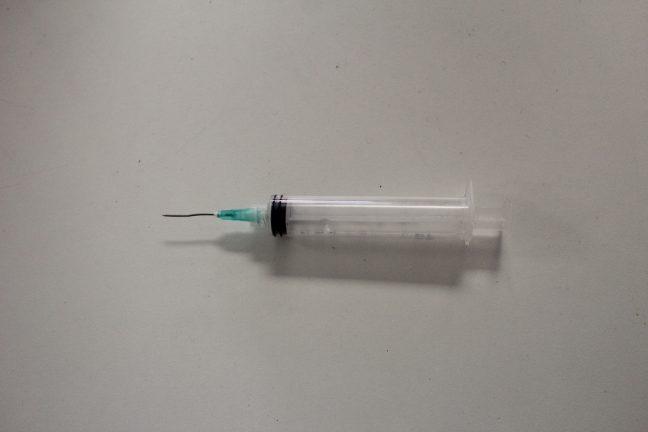As Wisconsin rolls out its first round of COVID-19 vaccinations, a University of Wisconsin immunization expert explains the impacts of the vaccine’s dissemination on the harrowing fight to end the pandemic.
UW Health became the first facility in the state to receive and administer Pfizer’s COVID-19 vaccine Monday. In accordance with state and federal guidelines, frontline healthcare workers are in the first tier of vaccine recipients. The different tiers determine the order of what groups receive the vaccine.
UW Professor of Pediatrics at the School of Medicine & Public Health James Conway leads UW Health’s immunization efforts as the programs’ medical director. After serving as a scientific advisor for both Moderna and Pfizer this summer, Conway now works on a Wisconsin Disaster Medical Advisory Committee about the state’s COVID-19 vaccine allocation and distribution and also works in Dane County’s distribution efforts.
More optimistic in the last four weeks than he has been in the last eight months, Conway provides insight into how Wisconsin health experts determined the order of vaccine distribution, immunization processes and the vaccine’s impacts on the state’s COVID-19 trajectory.
The following interview was edited for style and clarity.
With health workers becoming the first to receive the vaccine in Wisconsin, what does the distribution process look like in medical facilities like UW Health?
Within the health worker part of it, we actually had to define really what it is to be a health worker. As we assembled longer and longer lists of people that we thought really had the possibility to get infected or to infect patients, we started to create tiers within tiers. Within Tier One A, we have four subgroups within healthcare workers.
Wisconsin made the decision that in addition to frontline health workers, high-risk individuals that were residents in long term care facilities, and in the people who care for them in those facilities, would also be included in Tier One A. We really felt like there was a heavy burden being placed on the workers in those sites, and those patients were the ones that were ending up in hospitals and dying.
At UW, we interpreted the definition really broadly, and we really had to be inclusive to protect all of our employees, but remember those employees also could then be at risk for introducing the virus to other places if they came down with it.
What effects will immunization of frontline workers have on the broader community?
It’s going to take a while for it to make a major dent in the curve. With health workers broadly defined, I think it’ll certainly improve our staffing, because we do have both workers that are personally sick with COVID-19, and so we periodically have times when there’s just not as many people available. I think it will also hopefully start to keep some of those high-risk populations out of the hospital so we’re not really pushing toward being at full capacity.
Basically, there are about 20 to 21 million health workers in the U.S., and there are at any given time about 2 million people in long-term care facilities. This first wave, we’re hoping to have about 50 million doses, and it takes two doses to vaccinate an individual, so we’ll probably get through that 25 million in the first wave. The second wave then is going to be essential workers. I think that’s where you’ll start to see a little bit more impact and more of what is called herd immunity.
But I think it’s gonna take some months into the spring until we’ve immunized enough people that you’ll start to see the vaccine itself being responsible for taking that curve down. When we get to about 70% of the population immunized, we’ll start to see some real impact of having enough people protected that the virus doesn’t spread as widely. Once we get to 80%, it’s going to really start to tamp down. Toward 85% is when we could actually see this virus completely starting to go away.
Given the importance of distributing this vaccine in curbing the pandemic, what communication strategies and steps are necessary to ensure public confidence in the vaccine to combat misinformation?
I think you’re already starting to see the impact of just the sharing of real tangible information. In many ways, the traditional print media has been really important in getting more consistency out in the messaging. I think some of the political aspects of this have kind of been pushed to the side, and there’s been more actual data as opposed to just conjecture.
There is more and more data presented, very transparently and widely-shared, that shows the vaccines really do seem to be quite safe. Back in June and July, only about 50% of Americans indicated that they would actually be willing to get vaccinated. If you followed the recent Gallup polls, you’re seeing those numbers gradually inching up every couple of weeks.
I think that people have kind of started to come around to understanding that a vaccine really is our best and most likely off-ramp to get off of this horrible ride. The next part is reaching those that still have skepticism and doubt. As we immunize 21 million health workers and start to immunize more and more individuals around the country, we’re gonna very rapidly have literally tens of millions of people that will be able to have safety data and advocacy data on how well these vaccines work and how well people tolerate them. I think that’s going to speak volumes.


